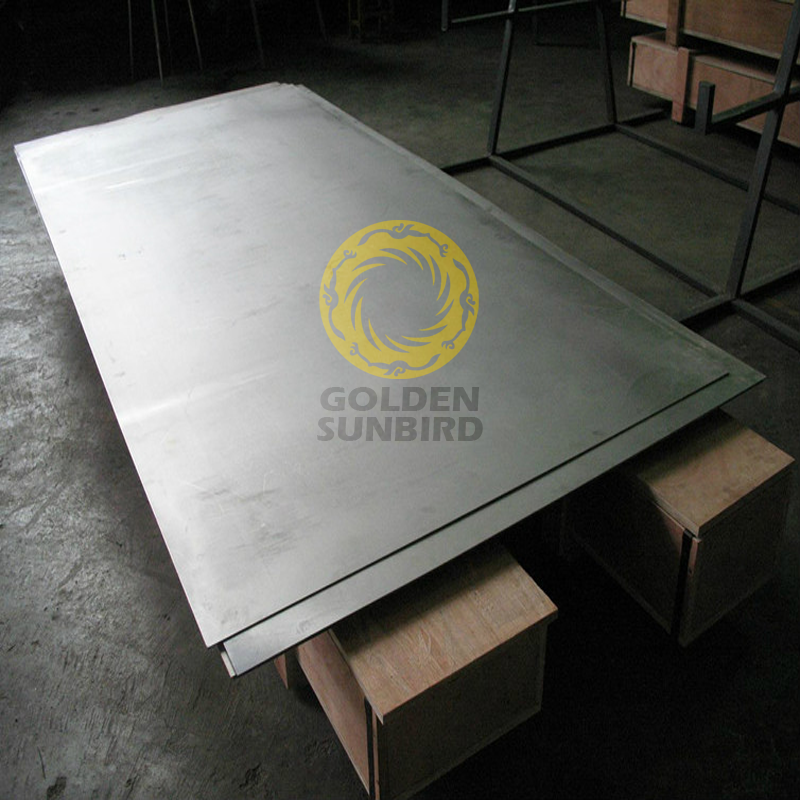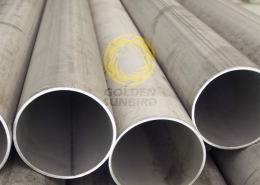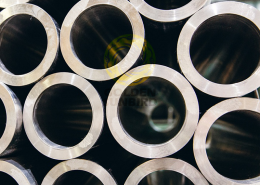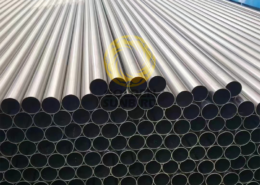AMS4911 Ti6Al4V Titanium Alloy Plate and Sheet
- Ti6Al4V
- Annealed condition
- High strength-to-weight ratio
- Excellent corrosion resistance
- Good biocompatibility
- High fatigue strength
- Good weldability
Features
AMS4911 Ti6Al4V Titanium Alloy, Sheet, Strip, And Plate, 6Al-4V, Annealed
Chemical Composition (wt.%)
| Element | Composition (%) |
|---|---|
| Aluminum (Al) | 5.50 – 6.75 |
| Vanadium (V) | 3.50 – 4.50 |
| Iron (Fe) | Max 0.30 |
| Oxygen (O) | Max 0.20 |
| Carbon (C) | Max 0.08 |
| Nitrogen (N) | Max 0.05 (500 ppm) |
| Hydrogen (H) | Max 0.015 (150 ppm) |
| Yttrium (Y) | Max 0.005 (50 ppm) |
| Other Elements, each | Max 0.10 |
| Other Elements, total | Max 0.40 |
| Titanium (Ti) | Remainder |
Mechanical Properties (Annealed Condition)
| Property | Value |
|---|---|
| Tensile Strength (min) | 895 MPa (130,000 psi) |
| Yield Strength (0.2% Offset, min) | 828 MPa (120,000 psi) |
| Elongation (in 4D, min) | 10% |
| Reduction of Area (min) | 25% |
| Modulus of Elasticity | 113.8 GPa (16.5 x 10^6 psi) |
| Density | 4.43 g/cm^3 |
Technical Specifications
| Specification | Value |
| Standard | AMS4911 Ti6Al4V Titanium Alloy, Sheet, Strip, And Plate, 6Al -4V, Annealed |
| Grade | Ti6Al4V |
| Melting Practice | The alloy shall be melted multiple times. The first melt shall be made using a vacuum consumable electrode, non-consumable electrode, electron beam cold hearth, plasma arc cold hearth, or skull melting practice. The subsequent melt or melts shall be made using vacuum arc remelting (VAR) practice. Alloy additions are not permitted in the final melt cycle. |
| Type | Titanium Sheet, Strip, and Plate |
| Dimension | Strip: Width 25.4-1219.2mm x Thickness 0.41-4.75mm |
| Sheet: Width 1000-2000mm x Thickness 0.41-4.75mm | |
| Plate: Width 1000-2000mm x Thickness 4.75-101.6mm | |
| Density | 4.51g/cm³ |
| Condition | Sheet and Strip: Hot rolled with or without subsequent cold reduction, annealed, descaled, and leveled, having a surface appearance comparable to a commercial corrosion-resistant steel sheet No. 2D finish. Plate: Hot rolled, annealed, descaled, and flattened, having a surface appearance comparable to a commercial corrosion-resistant steel No. 1 finish. Plate products shall be produced using standard industry practices to deliver plates to the procured thickness. Bar, billet, forgings, or forging stock shall not be supplied in lieu of plate. |
| Inspection Certificate | EN 10204 Type 3.1 (Mill Test Certificate), EN 10204 Type 3.2 (Witness Testing or 3rd Party Inspection) |
| Tests | Chemical Composition, Mechanical Properties |
Key Properties
High strength-to-weight ratio: Offers excellent strength compared to its weight, making it ideal for lightweight structures.
Excellent corrosion resistance: Highly resistant to corrosive environments, including saltwater, acids, and many chemicals.
Good biocompatibility: Suitable for medical implants due to its inertness within the human body.
High fatigue strength: Withstands cyclic loading and stress without failure.
Good weldability: Can be welded using specific techniques.
Packing
Packed in plywood boxes or on pallets.
Application
Aircraft structural components: Ti6Al4V’s high strength-to-weight ratio and fatigue resistance make it ideal for critical structural parts like wing spars, fuselage frames, and landing gear components.
Engine components: Its ability to withstand high temperatures and stresses makes it suitable for turbine blades, discs, and other engine parts.
Rocket and spacecraft structures: These are used in launch vehicles and spacecraft for their strength and weight savings.
Implants: Ti6Al4V’s biocompatibility, strength, and corrosion resistance make it suitable for various medical implants like hip and knee replacements, bone plates, and dental implants.
Surgical instruments: The material’s durability, lightweight nature, and resistance to sterilization make it perfect for surgical instruments.
Armour plating: Ti6Al4V is used in armored vehicles and body armor due to its high strength and ability to stop projectiles.
Military aircraft and weapons systems: These are utilized in various military applications for their strength, weight savings, and corrosion resistance.
High-performance parts: Used in racing cars, motorcycles, and other high-performance vehicles for components like connecting rods, valves, and suspension parts due to their strength and weight reduction benefits.
Exhaust systems: The alloy’s resistance to high temperatures and corrosion makes it suitable for exhaust systems.
Chemical processing equipment: Utilized equipment that handles corrosive chemicals due to resistance.
Marine applications: These are found in boat hulls, propeller shafts, and other marine components because they are corrosion-resistant in saltwater environments.
Sporting goods: They are used in bicycle frames, golf clubs, and tennis rackets because of their strength and lightweight properties.








